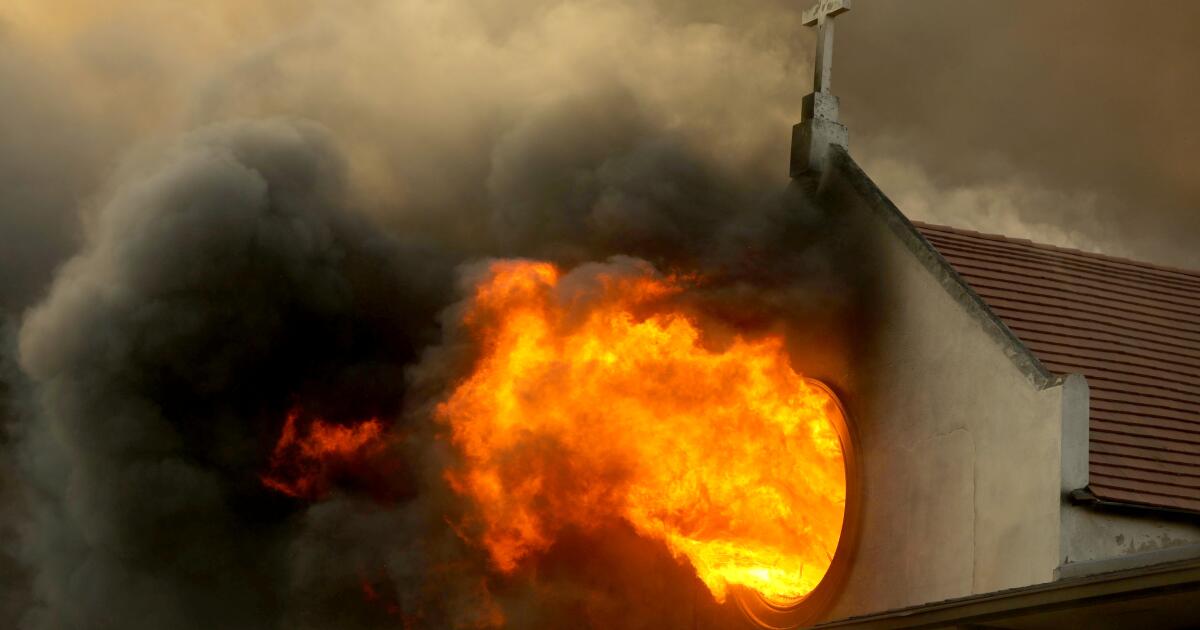Los Angeles firefighters were hampered by a lack of resources for red flag weather conditions in their initial response to the Palisades fire, an internal after-action review report found.
The long-awaited 70-page report, produced by the Los Angeles Fire Department, was released late Wednesday afternoon on the heels of an announcement by federal prosecutors that they had arrested and charged a man with intentionally setting a fire on Jan. 1 that later reignited and became the Palisades fire.
Federal investigators determined that the Jan. 7 fire was a so-called holdover from the Jan. 1 fire, continuing to smolder and burn underground after firefighters thought they had extinguished it. The investigators said that heavy winds six days later caused the underground fire to surface and spread above ground in what became one of the costliest and most destructive disasters in city history.
In its after-action report, the Fire Department listed almost 100 challenges that firefighters faced during the Palisades fire, including an inability to secure the origin of the fire, an ineffective process for recalling firefighters who were off-duty to come back into work, and fire chiefs with little to no experience handling such a major incident. During the initial attack, the report said, most firefighters worked for more than 36 hours without rest.
The report cited a delay in communicating evacuation orders, which resulted in spontaneous evacuations without structured traffic control, causing people to block routes to the fire, the report said. The initial staging area, which was in the path of the evacuation route and the fire, was consumed by flames within 30 minutes, the report said.
The Palisades fire, which started at 10:30 a.m. Jan. 7, was one of the costliest and most destructive disasters in city history, leveling thousands of homes and killing 12 people.
A Times investigation found that LAFD officials did not pre-deploy any engines to the Palisades ahead of the fire, despite warnings about extreme weather. In preparing for the winds, the department staffed up only five of more than 40 engines available to supplement the regular firefighting force.
Those engines could have been pre-positioned in the Palisades and elsewhere, as had been done in the past during similar weather.
This is a developing story and will be updated.
